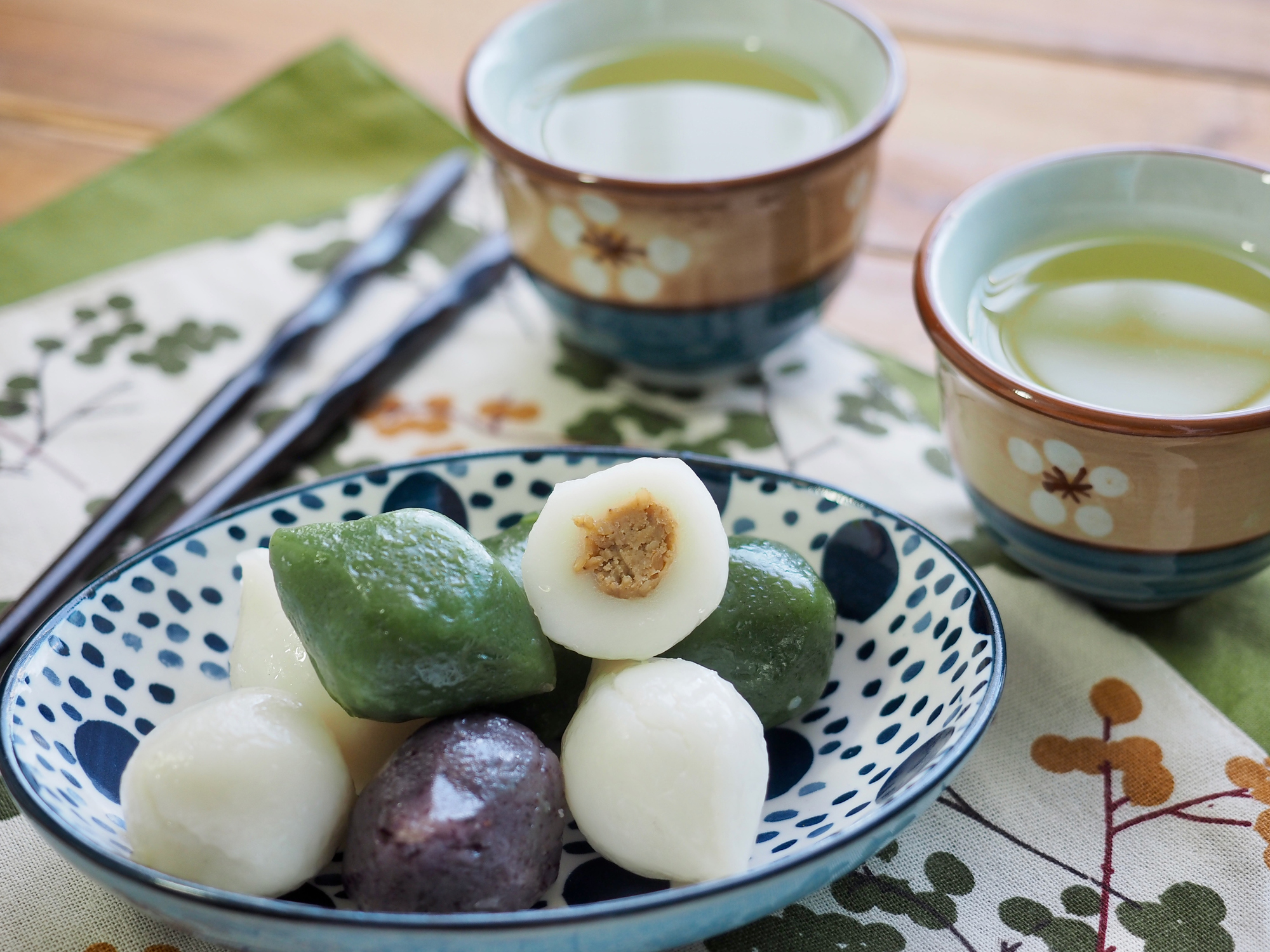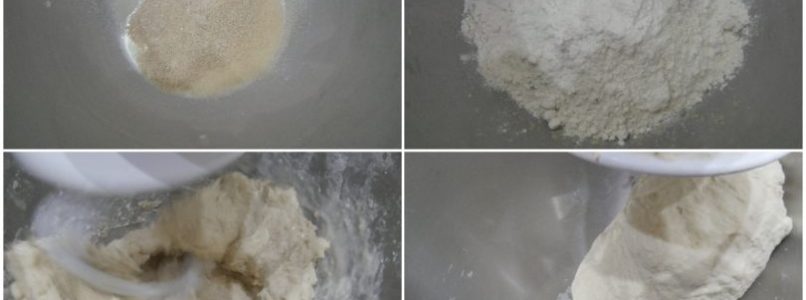The songpyeon they are rice cakes that in Korea are prepared on the occasion of Thanksgiving Day, which coincides with the mid-autumn festival that is celebrated in many Asian countries. These small crescent-shaped cakes (tteok) are stuffed with sweet filling of sesame seeds, sugar and honey, while the dough is formed from frozen rice powder combined with different smoothies, juices or powders that give a natural color to the dough. Traditionally it was used a short grain rice that was soaked for a whole night and then rinsed before being ground into powder, now they sell on the market already the frozen rice powder, which is then mixed with boiling water and natural dyes and then once the cakes are stuffed they come steamed on a bed of pine needles.
Recipe
Ingredients
A 1 kg bag of frozen rice powder will suffice for 3 different colored doughs, 150 g of pine needles to be rinsed 2 or 3 times and to dry, ideas for different colored doughs, each variant produces about 20 rice cakes.
Base dough (white)
2 cups of frozen rice powder, thawed at room temperature, 5 tablespoons of boiling water.
Green dough
2 cups of frozen rice powder, defrosted at room temperature, 2 tablespoons of green tea powder or matcha tea, 6 tablespoons of boiling water.
Yellow dough
2 cups of frozen rice powder, defrosted at room temperature, 1/3 cup of steamed pumpkin pulp, 2 tablespoons of boiling water.
Purple dough
2 cups of frozen rice powder, defrosted at room temperature, 4 tablespoons of warm cranberry juice (1/2 cup of fresh or frozen blueberries, finely blended with 1/2 cup of water, filtered and heated).
Pink dough
2 cups of frozen rice powder, defrosted at room temperature, 4 tablespoons of raspberry juice (1/2 cup of fresh or frozen raspberries, finely blended with 1/2 cup of water, filtered and heated).
Filling
1/2 cup of toasted sesame seeds, 2 tablespoons of sugar, 1 tablespoon of honey, 1 pinch of salt.

Method
Grind coarsely sesame seeds with a blender, add sugar, honey and a pinch of salt and mix everything together.
After thawing the rice powder, sieve it in a bowl. Divide it into three equal parts and prepare the ingredients to flavor and color the dough and add them to the rice powder, mixing them with a spoon.
Knead all right for at least 5 minutes, if the dough sticks to the hands or the bowl means that it is too wet then add more rice powder. If the dough breaks easily or is too hard and dry add a little bit of boiling water. Cover the dough with a plastic wrap or a damp cloth and leave to rest in the refrigerator for 20-30 minutes.
To assemble the sweets, take a small piece of dough to form a ball as big as a nut. Form a bowl inside the ball by pushing the thumb into the mixture and then pressing it outwards with both thumbs to make a fairly large bowl. Put 1/2 teaspoon of stuffing into the bowl and seal by pressing on the edges, modeling it like a half moon. Repeat the operation until the end of the dough and the sweet filling.
Take a steam pot, add a little water to boil, place a thin layer of pine needles or a damp kitchen cloth on the basket and heat the water over high heat. When it starts boiling, place the rice cakes on the drum without the pieces touching each other. Cover with a thin layer of pine needles and steam for about 20 minutes.
Prepare a large bowl of cold water and with the help of a perforated spoon remove the rice cakes from the basket. Leave them in cold water for a quick rinse, removing all pine needles. Transfer the rice cakes into a colander and then serve hot or at room temperature.









